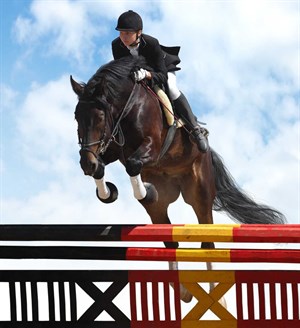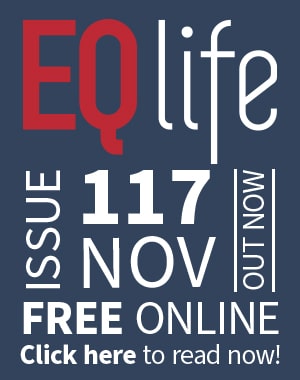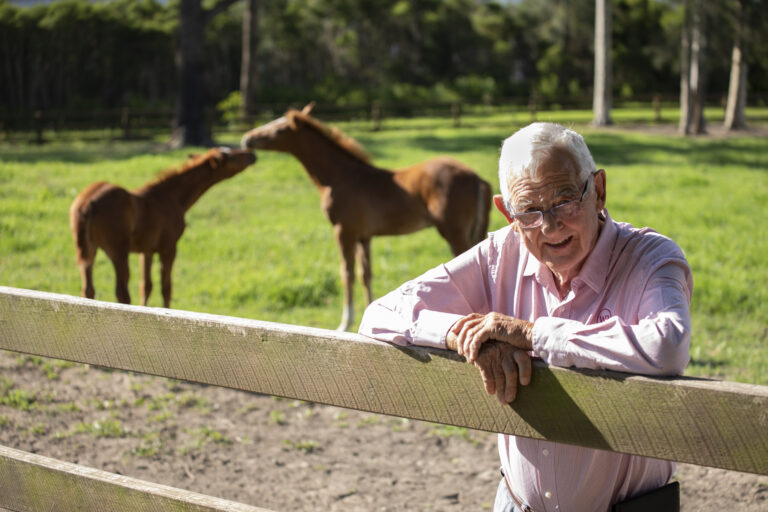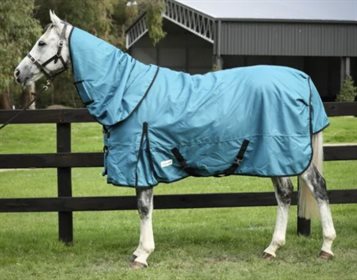While it’s generally accepted that racehorses are at very high risk of ulcer development, many horse owners are unaware that non-racing performance horses such as dressage, jumping, drafting and endurance horses also suffer commonly from this disease. The risk is higher if these horses are stabled and/or travel to competitions.
Did you know that over 70 percent of jumping and dressage horses had ulcers over periods of training and competition1? In other research, two out of three endurance horses were found to have ulcers immediately after competition2. There can be a variety of contributing factors, for example external stresses such as travel, training, bullying, isolation, or internal stresses such as injury or illness, particularly if the horse is treated with non-steroidal anti-inflammatory drugs such as “bute”.
The feeding regime for performance horses can also be a contributor, particularly if these horses are fed just once or twice a day, receive too little roughage, or do not spend enough time grazing. Horses are meant to spend up to 20 hours per day grazing. When they chew, saliva is produced and swallowed. This saliva buffers the acid produced in the stomach and neutralises it. Once the acid has been neutralised, it cannot harm the stomach wall, and ulceration is prevented.
It is also important that horses have regular dental check-ups, which should be performed by a veterinarian with the horse sedated. This allows for good visualisation of the entire oral cavity and appropriate dental care if required. If horses can’t chew properly due to dental problems, they won’t product enough saliva to counteract the stomach acid and will be at increased risk of ulcer development.
Was your horse a bit “off” at the last competition you travelled to? Even travelling to a local show for a day or two can result in stomach ulcers in horses that otherwise would not be at risk. The incidence of ulcers in show horses has been shown to increase to 58 percent after three consecutive days of travel and competition3. A change in environment, long periods of standing at competitions, decreased grazing activity, long wait for night feeds, change in water and the stress of the travel itself may all result in ulceration. These horses should be covered with appropriate ulcer preventative medications, particularly before, during and after travel.
Generally horses suffering from gastric ulcers will show mild signs of pain and discomfort, which may include sour disposition, still eating but losing condition or weight, avoiding hard feed and preferring hay, or poor appetite. Other signs may include a dull coat, being unsettled in training or unwilling to work, grinding teeth, crib-biting, wind-sucking or colic. It is important to remember that some horses affected by gastric ulcers will display no clinical signs at all!
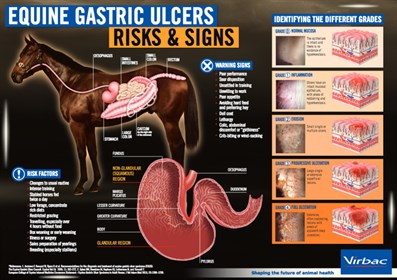
Click on the image to download the PDF version
Diagnosis of equine ulcers is often based on clinical signs and a treatment trial over a few days. Treatment of gastric ulcers is aimed at shutting down acid production in the stomach. Recommendations for show, pleasure and performance horses often vary on a case by case basis, depending on factors such as the horse’s feeding regime, exercise program, whether they’re stabled or kept in paddocks, and whether they’re travelling or not.
If you think your competition horse may be suffering from gastric ulcers, or you would like to prevent them from occurring, it is important that you seek advice from your veterinarian who can prescribe appropriate medication to prevent or treat ulcers.
Could your horse have gastric ulcers? Try out the Ulcer Risk Calculator and see how your horse scores.
References:
1. McClure SR et al 2005. Gastric ulceration in horses exposed to training and activities typical for recreational showing. AAEP Proceedings Vol 51.
2. Nieto JE et al 2004. Prevalence of gastric ulcers in endurance horses – a preliminary report. Vet J 167: 33-37.
3. McClure SR et al 1999. Prevalence of gastric ulcers in show horses. J Am Vet Med Assoc 215: 1130-3.
READ THE LATEST NEWS ARTICLES HERE
